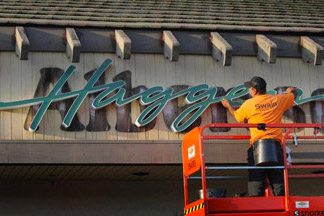By: Matt Hammond, Coreland Companies
As published in Western Real Estate Business, October 2015
The Orange County market remains active thanks to declining vacancies and increasing job creation and housing starts. As a result, enthusiasm was evident at the recent ICSC Western Division Conference in San Diego, as industry colleagues discussed opportunities and challenges associated to the strength of the local market.
For a period of time there has been very little new development in Orange County, which has seen more than three million square feet of vacant space absorbed since 2011 according to CoStar. There continues to be an unbelievable demand for retail investment property and the Fed’s announcement to maintain existing interest rates will only increase competition in this limited market.
A dynamic investment market offers both challenges and opportunities for retail leasing.
Limited local new development is directly connected to continued instability among major grocery stores and big-box retailers. We might never see another ground-up traditional power center again because of post-recession downsizing and shakeouts among major retailers. While many of the major, national retailers remain active, the focus has turned to expansion in smaller, urban environments, which are limited in Orange County.

Grocery-anchored, daily-needs centers remain a Class ‘A’ asset. However, instability in the local grocery sector continues to challenge the industry. Recent announcements of store closings by Haggen and Fresh & Easy surprised, but did not stun most. Local experts understand that breaking into the Southern California is not an easy feat. That said, this competitive but extremely lucrative market is difficult to ignore. The industry has now turned its focus to the likes of Aldi and Grocery Outlet, which plan to expand aggressively in the coming months.
Limited new development remains a fantastic opportunity for savvy owners that have been able to capitalize on existing, well-positioned assets. Five- and 10-year leases coming due are allowing owners to transition spaces that were previously leased at below-market rents. There remains heavy competition among national credit tenants for properties positioned at “Main and Main.”
Creative owners of under-performing but well-located assets have also found opportunities in strategically repositioning properties to adapt to the changing needs of the consumer. There are a number of examples of Orange County multi-tenant centers that have been successfully converted to specialty centers. Among these is The Triangle in Costa Mesa, which has nearly completed a major repositioning effort into a dining and entertainment hub. Given the rapidly-changing retail and technology industries, it is integral to stay ahead of the curve and adapt to the changing needs of the consumer.
Local shopping centers located within trade areas of lower-income demographics are more challenged due to the heavy expansion that took place among discount retailers. Many of these retailers, specifically national players such as 99 Cents Only and Dollar Tree, remain positive drivers. However, select areas are struggling with an over-abundance of value-oriented retailers making it more difficult to re-lease junior box space when left with a vacated Anna’s Linens or Office Depot, for example.
Overall, today’s consumer is definitely spending more on a monthly basis, which is positively affecting retailers at a measured pace. Tenants operate at slim margins, but if consumer spending continues to increase, expect the industry to be able to push rents and drive value over the upcoming quarters.

